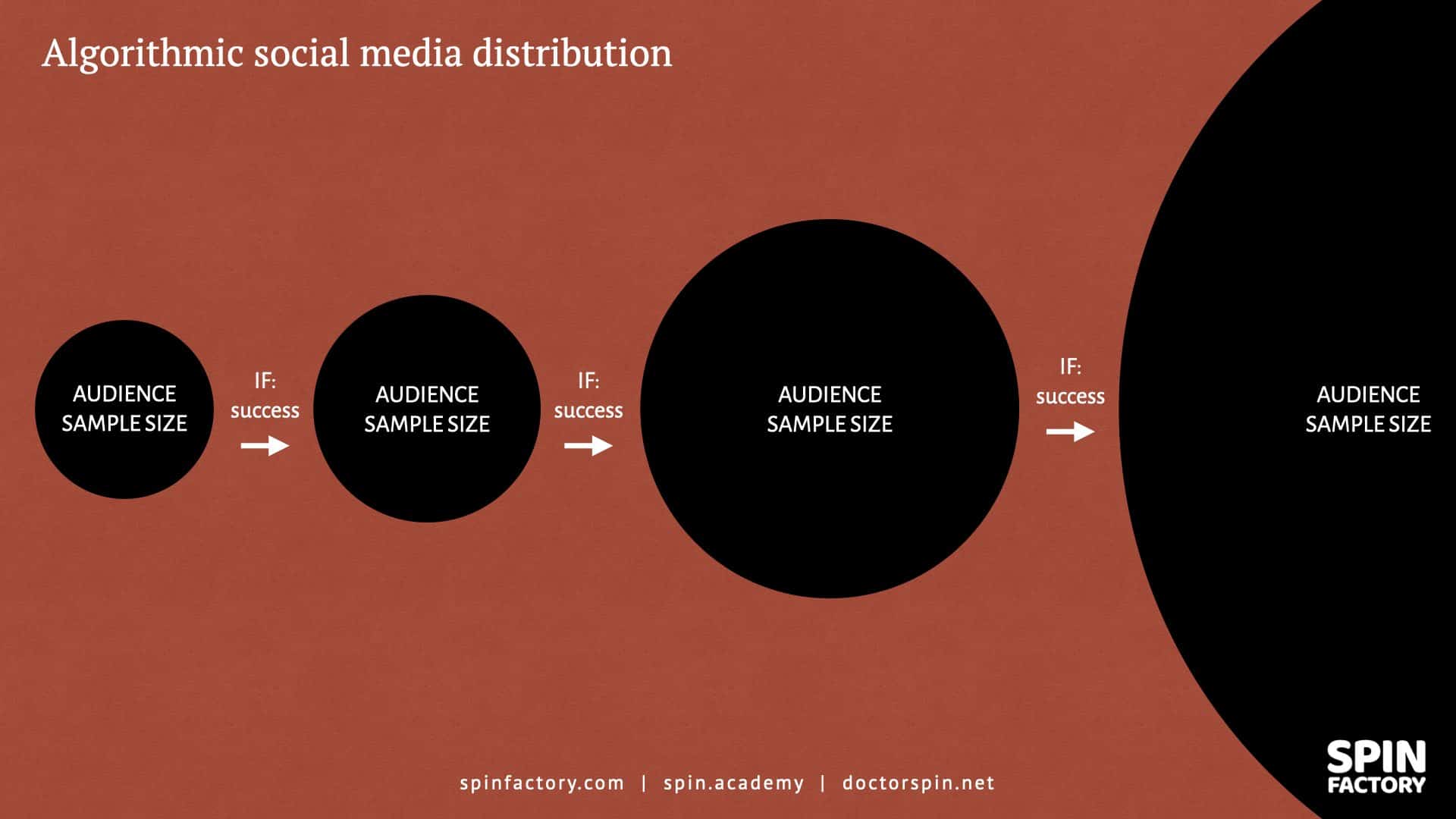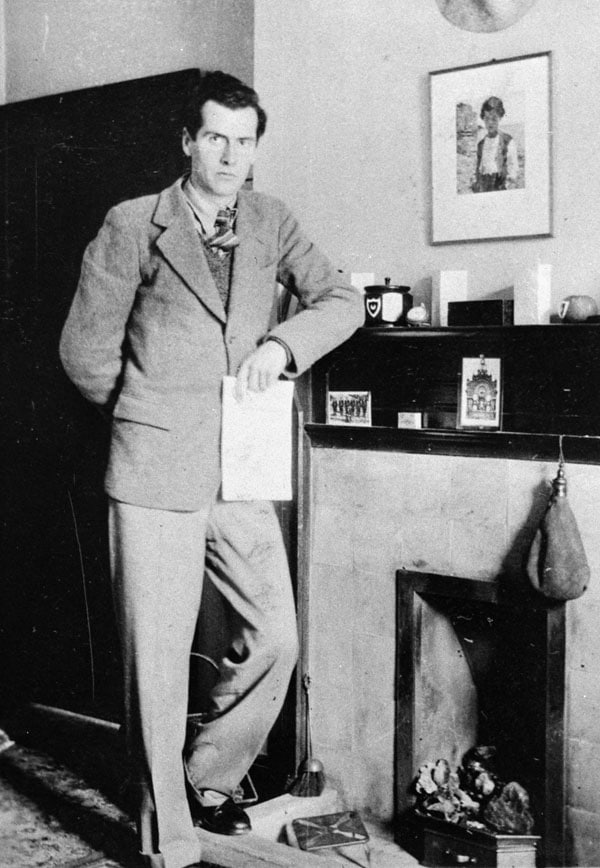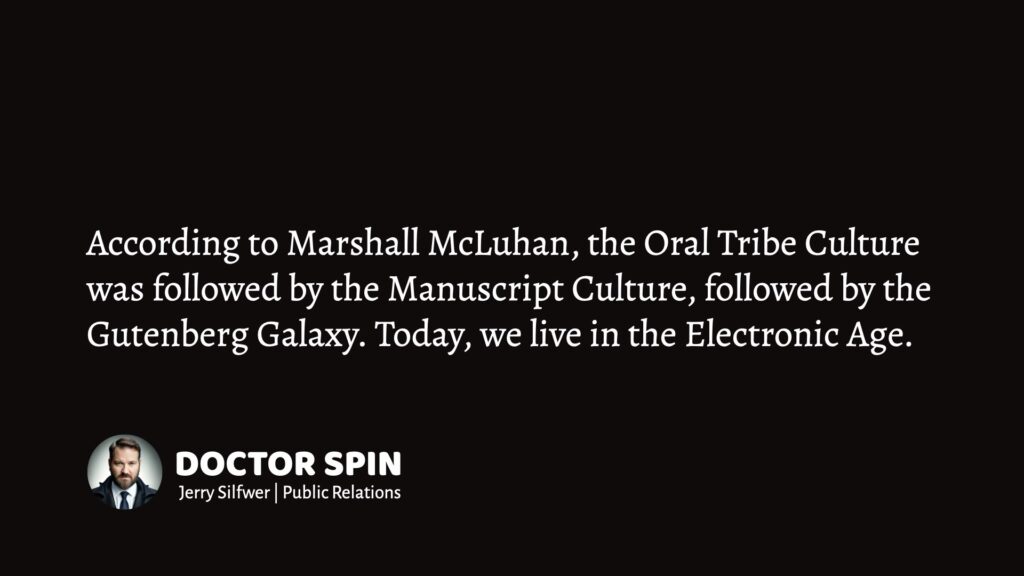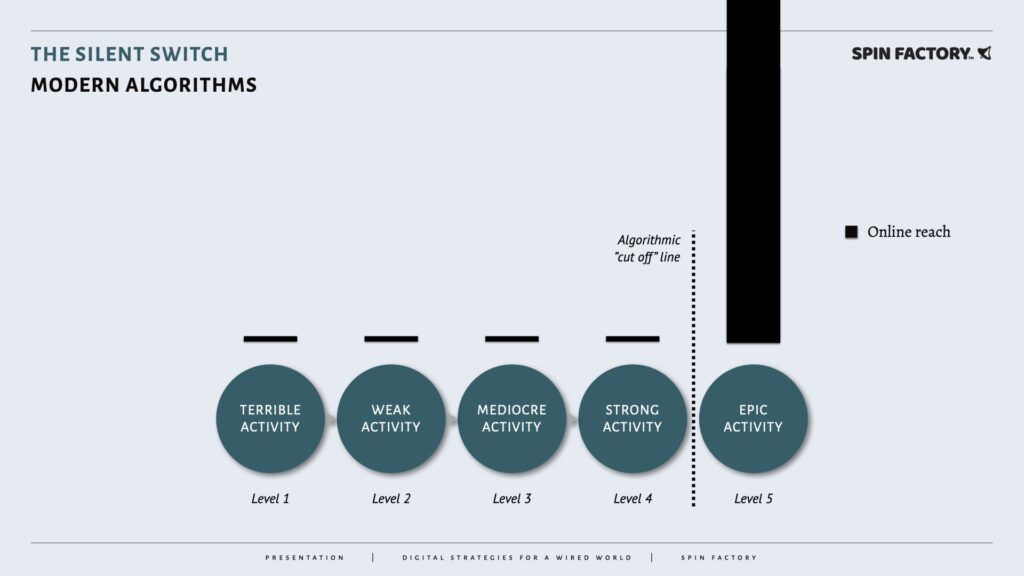TikTok’s algorithm doesn’t work the way most people think.
TikTok, an app for making and sharing short videos with others, is one of the world’s most popular social media platforms. But how does its algorithm work?
This article will examine TikTok’s algorithm and explore why it’s so successful for viral videos.
Here we go:
The Success of TikTok
Since its creation in 2017, TikTok has become one of the world’s most popular social media platforms. The formerly Musical.ly app has over 750 million users and is especially popular with teens and young adults. 1TikTok will have 750 million monthly users worldwide in 2022, according to Insider Intelligence’s forecast. It is now the third-largest social network of the Big Five worldwide (Facebook, Instagram, … Continue reading
The app, owned by Chinese company ByteDance, is a video-sharing platform where users can share short videos of themselves with others on the app.
TikTok’s algorithm is constantly changing and evolving to better match users with videos they will enjoy.
How Social Media Has Changed
The Silent Switch
All social media algorithms are built differently and are constantly being developed. At the same time, social media users’ behaviours are evolving.
Still, there was a way that social media algorithms used to behave—and there is a way that social media algorithms behave now.
This has been a fundamental but silent switch.
How Social Media Algorithms Used To Behave
For more than a decade, social media algorithms would deliver organic reach according to a distribution that looked something like this:
This distribution of organic reach enabled organisations to use social media despite not being “media companies.”
How Social Media Algorithms Behave Today
Today, after the silent shift, social media algorithms deliver organic reach more like this:
The increased competition and sophistication among content creators partially explain this new type of distribution. However, going viral is still just as possible for anyone.
How does this work?
The Single Content Algorithm
How can a social network predict what users will like?
Content from a trusted creator trusted by a large community of followers used to be the leading indicator of future performance. But today, social networks have found a better way to predict content success.
The single content algorithm = when social networks demote content creator authority to promote single content performance to maximise user engagement for ad revenue.
The single content algorithm presents newly published content to a limited audience sample size:
If the newly published content tests successfully, the social media algorithm pushes that content to a slightly larger statistical subset. And so on.
This iterative process means that single pieces of content worthy of going viral will go viral, a) even if it takes a longer time, and b) regardless of the content creator’s number of followers.
Learn more: The Silent Switch
Misconceptions About TikTok’s Algorithm
Many people have misconceptions about how TikTok’s algorithm works. They believe the algorithm is based solely on timing and engagement.
However, this is not the case. ByteDance is basing the algorithm on an iterative process that tests different audience subsets to see which videos are more likely to be popular.
Wait. What?
Sure, the TikTok algorithm is, to an extent, designed to surface the most relevant content for users. It considers various factors, such as how often a user has interacted with a particular creator or video, the time of day, and the user’s location.
But there’s more to the TikTok algorithm. Much more.
How People Think About TikTok’s Algorithm
Here’s how most people think that the TikTok algorithm works:
TikTok’s algorithm tracks your activity on the app. Based on this data, it uses advanced machine learning to build a psychological profile on you, the user, to serve you content specifically to maximise your engagement.
If the TikTok algorithm builds psychological profiles on each user, here’s what that type of AI computing would entail:
Whenever your “personal” algorithm is fired off, your smartphone app must call TikTok’s centralised machine-learning network. Then, the central network must process all variables, decide on an outcome, and deliver the result to your smartphone.
From a business perspective, the process comes with two significant drawbacks:
1. AI server calls are expensive. 2“Sufficient algorithm performance is one of the major cost factors to consider because accurate predictions require several rounds of tuning sessions, which raises the cost of implementing AI … Continue reading
2. Individual human behaviour is still an AI challenge. 3“Human beings are most often an integrated part of complex systems. In order to describe such a system with appropriate accuracy it is necessary to model the human components with the same accuracy … Continue reading
Two great examples of current commercially viable AI capabilities are Siri and Alexa. Your spoken words are uploaded to the cloud, analysed using artificial intelligence, and the outcome is then delivered back to your device. Siri and Alexa are exciting technologies but have quite limited capabilities.
What if there’s a way to design a social media algorithm that’s a) faster, b) cheaper, and c) more accurate?
How the TikTok Algorithm Works
Here’s how a faster, cheaper, and more accurate social media algorithm operates:

TikTok, the video-sharing app, has been shadowbanning users who post content inconsistent with its guidelines. Their videos do not appear in the app’s search results, and their followers do not see their posts. TikTok has not clearly explained why this is happening, but the company is likely trying to avoid legal trouble.
Consequences for Users and Creators
You might wonder what this means for the users and content creators.
To better explain, we must establish a baseline, i.e. have something to compare the outcomes of today’s social media algorithms.
Here’s how social media algorithms used to work:
Historically, social networks used algorithms to match past user behaviour with past content creator content.
In the early days of social media, social networks didn’t have the technical capability to run live behaviours against live content. So, they had to rely on historical data accumulated over time on users and content creators.
In summary, we have discussed three general types of algorithms:
Matching based on historical data = This is how most social media algorithms operated in the past.
Live server-side processing based on individual inputs = This is how many people (and the news media) think social media algorithms operate.
Iterative testing on pre-built audiences = This is how most of today’s social media algorithms work.
Hopefully, we will soon see more live server-side processing based on individual inputs. However, nothing indicates that this is how social media algorithms operate today.
So, what does this mean? For users and content creators, the primary outcome is still the same:
Consistency = With historical matching and iterative testing, consistency is the most prominent approach to getting stable and somewhat predictable results. Live server-side processing would allow users and content creators to experiment (and reach relevant audiences dynamically), but we’re not there yet.
But most other algorithmic outcomes are different today:
Authority = Having a large following matters less today because iterative testing will push single content based on their live scores, not the content creator’s merits. It promotes attractive thumbnails, clickbait headlines, second-by-second user retention, etc. — and less on creator clout.
Timing and decay = Iterative tests can produce a slow burn, allowing content to go viral more slowly. Historical matching requires content creators and users to be active within the same time intervals for a piece of content to preserve its momentum.
Competition = With iterative testing, there are fewer shortcuts. To a greater extent than before, every content competes with every other part. And with the trend of showing users more content from non-followed creators, combined with increasingly more available content overall, competition will only get more challenging.
Iterative Testing Pushed to the Limit
A reasonable assertion at this point is to conclude that social media algorithms favour easily digestible content that has been dumbed down to a bare minimum.
Today’s social media algorithms seem to favour fantastical and attention-grabbing content — almost to the point of becoming parodies of themselves.
Well, yes.
This is sort of true.
But not quite.
TikTok is the leading example of pushing the boundaries of iterative testing.
The TikTok algorithm favours content requiring very little of the user’s mental effort. And this is, obviously, successful for producing entertaining (and addicting) user experiences.
However, Google Search is on the other side of this spectrum, with a heavier lean towards historical matching. Building authority through traffic, links, and analytics data for SEO success still matters.
But this is why social networks like Facebook, YouTube, and Instagram struggle with their algorithms. They’re positioned between TikTok and Google Search.
On the one hand, they want to emulate TikTok’s massive algorithmic success by serving easily digestible and fantastical video shorts. On the other hand, they also need to preserve their relevance:
What good is a friend app without friends? (Facebook)
What good is a long-form video app without long-form videos? (YouTube)
What good is a photo app without photos? (Instagram)
How To Improve Your TikTok Content
You’re probably reading this blog post to understand how to negotiate the TikTok algorithm successfully as a content creator.
Great!
When you have a deeper understanding of how TikTok’s algorithm works, it becomes easier to figure out the right formula:
Stay consistent and only make minor iterative tweaks to your videos based on your results. Perhaps your thumbnails aren’t grabbing attention? Make tweaks and post ten videos using better thumbnails. Did it work? If not, try another thumbnail approach for ten videos. Otherwise, move on to the next tweak.
Repeat.
Maybe you’re now wondering where to start.
I wouldn’t worry too much.
See my point? The conscious act of iteratively improving your content output is more paramount than your choice of where exactly to start.

THANKS FOR READING.
Need PR help? Hire me here.

PR Resource: The 7 Graphs of Algorithms
Spin Academy | Online PR Courses
Types of Algorithm Graphs
Search engines, social networks, and online services typically have a wealth of user data to optimise the user experience.
Here are examples of different types of graphs that social media algorithms use to shape desired behaviours:
The different graphs are typically weighted differently. For instance, some media companies allow a fair degree of social graph content, while others offer almost none. Changes are constantly being enforced, and the silent switch might be the most notable example of a media company shifting away from the social graph. 4Silfwer, J. (2021, December 7). The Silent Switch — A Stealthy Death for the Social Graph. Doctor Spin | The PR Blog. https://doctorspin.net/silent-switch/
The media company can leverage these graphs using two main approaches:
Today, profiling seems to be the dominant approach amongst media companies.
Learn more: The 7 Graphs of Algorithms: You’re Not Unknown
💡 Subscribe and get a free ebook on how to get better PR.

PR Resource: The Electronic Age
Enter: The Electronic Age
Human culture is often described based on our access to production technologies (e.g., the Stone Age, the Bronze Age, and the Iron Age).
According to Marshall McLuhan and the Toronto School of Communication Theory, a better analysis would be to view societal development based on the prominence of emerging communications technologies.

McLuhan’s Four Epochs
McLuhan suggests dividing human civilisation into four epochs:
“The Gutenberg Galaxy is a landmark book that introduced the concept of the global village and established Marshall McLuhan as the original ‘media guru’, with more than 200,000 copies in print.”
Source: Modern Language Review 5McLuhan, M. (1963). The Gutenberg galaxy: the making of typographic man. Modern Language Review, 58, 542. https://doi.org/10.2307/3719923

As a PR professional and linguist, I subscribe to the concept of the Electronic Age. I firmly believe society is unlikely to revert to the Gutenberg Galaxy.
Like the rest of society, the PR industry must commit to digital-first, too. Mark my words: It’s all-in or bust.
Read also: The Electronic Age and the End of the Gutenberg Galaxy
Annotations
| 1 | TikTok will have 750 million monthly users worldwide in 2022, according to Insider Intelligence’s forecast. It is now the third-largest social network of the Big Five worldwide (Facebook, Instagram, TikTok, Snapchat, and Twitter). |
|---|---|
| 2 | “Sufficient algorithm performance is one of the major cost factors to consider because accurate predictions require several rounds of tuning sessions, which raises the cost of implementing AI solutions. The higher the accuracy and efficiency of the AI predictions, the more the cost of implementing these solutions.” Source: Analytics Insight |
| 3 | “Human beings are most often an integrated part of complex systems. In order to describe such a system with appropriate accuracy it is necessary to model the human components with the same accuracy as the technical components. Human factors must be included and modelled with the same degree of precision as the system’s mechanical parts.” Source: Human Factors in Complex Systems The Modelling of Human Behaviour |
| 4 | Silfwer, J. (2021, December 7). The Silent Switch — A Stealthy Death for the Social Graph. Doctor Spin | The PR Blog. https://doctorspin.net/silent-switch/ |
| 5 | McLuhan, M. (1963). The Gutenberg galaxy: the making of typographic man. Modern Language Review, 58, 542. https://doi.org/10.2307/3719923 |





